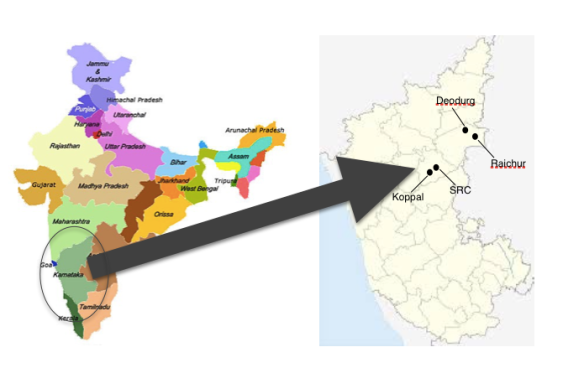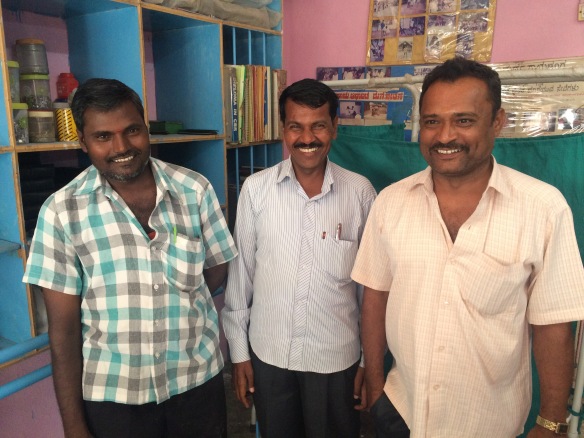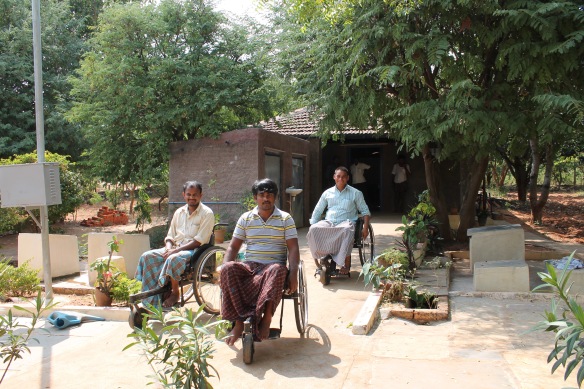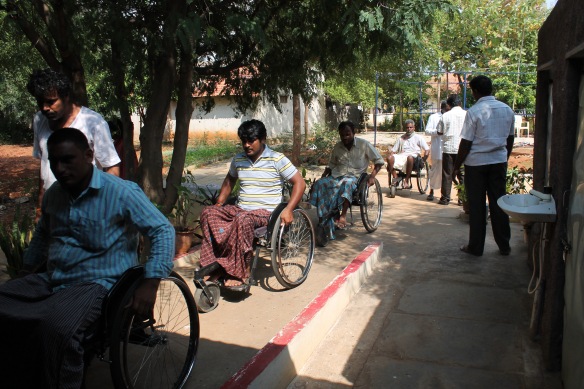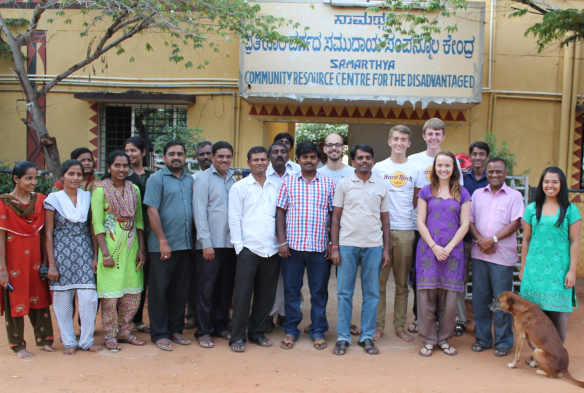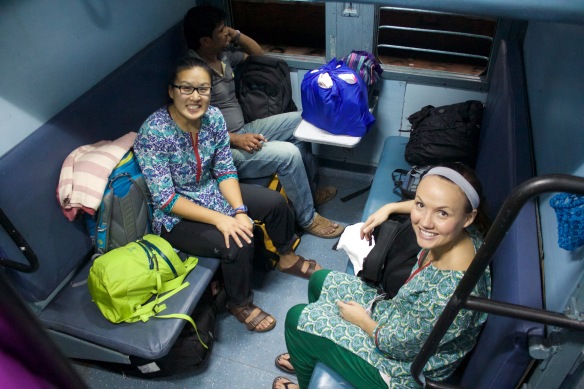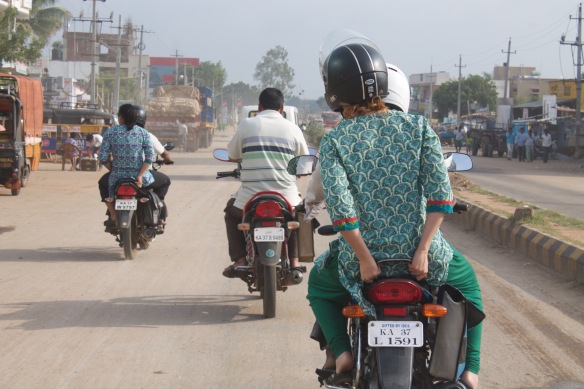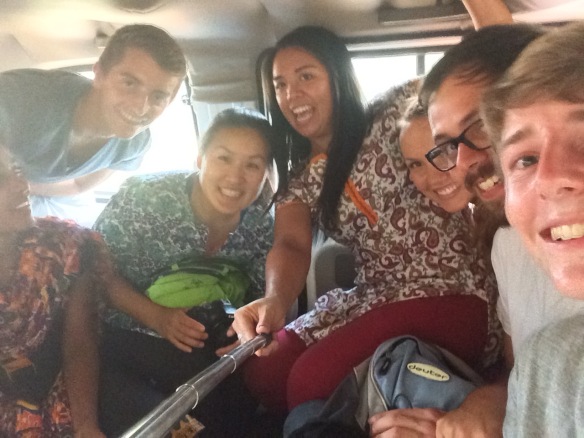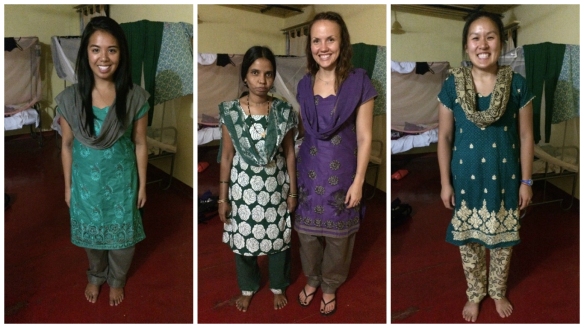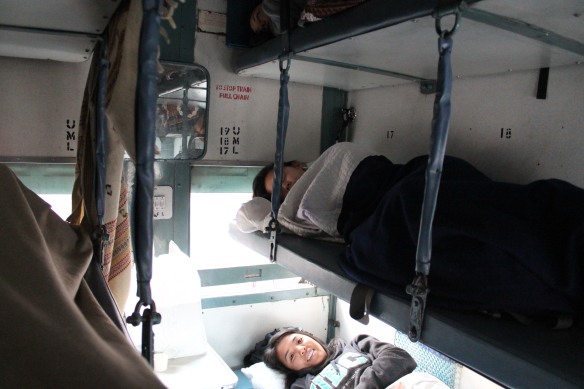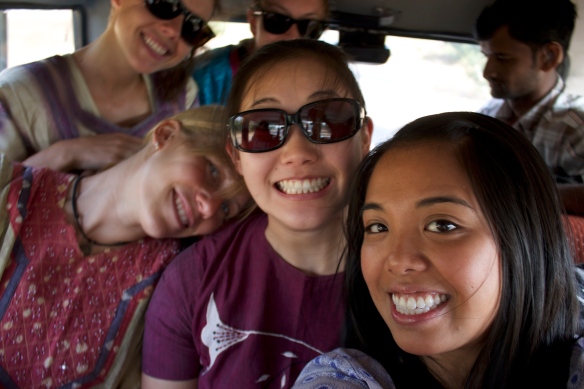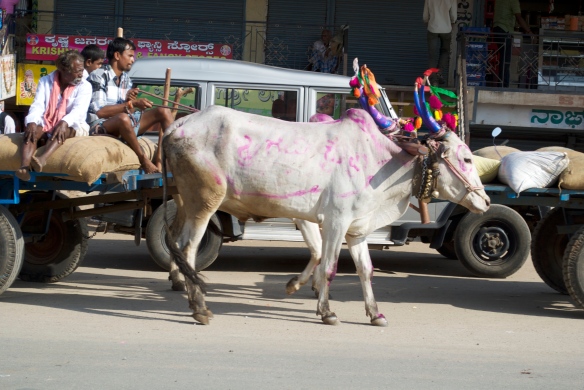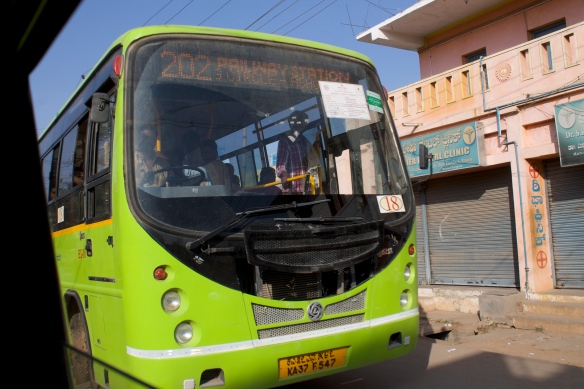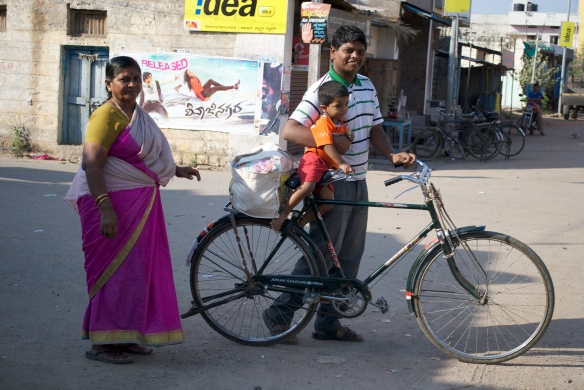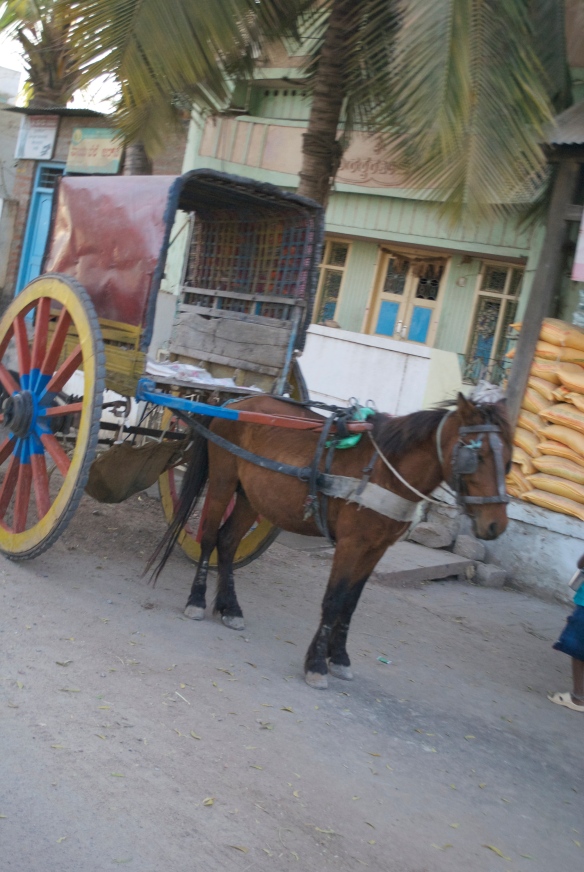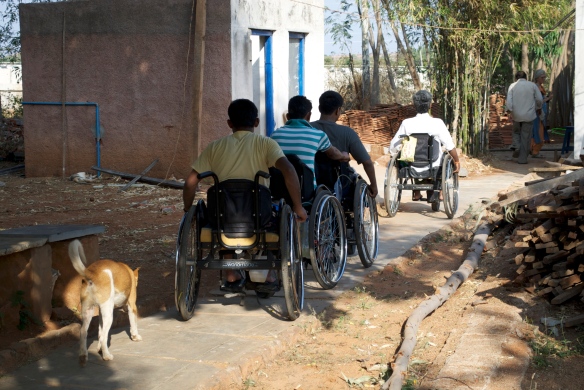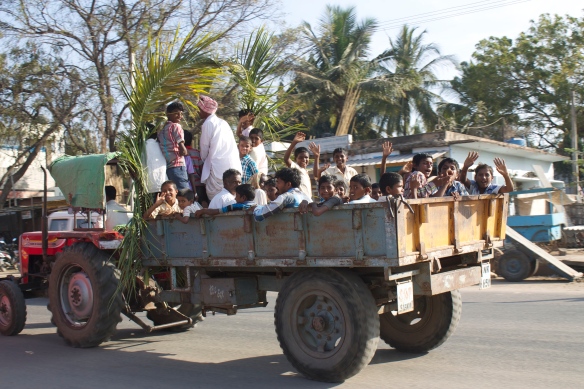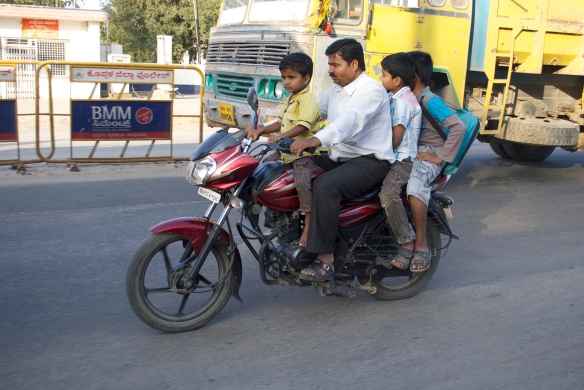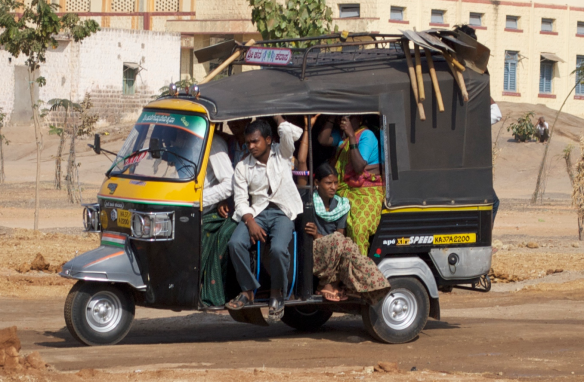It’s hard to believe a month has flow by already, and that volunteer Julie’s time at Samarthya has come to an end! As we stated before, our goal is to further develop and strengthen the centers in the four following campuses:
The Early Intervention Center in Koppal is a well-oiled machine. The Senior CBR-worker Prabhakar is highly skilled with the children, and is focused on providing education for the families. He truly strives to empower the parents to be the driver of their own child’s healthcare, and tries to decrease their dependency on him. Julie had several discussions with him and suggested some time-saving strategies to make him even more efficient. She created an exercise sheet template to increase parent compliance and decrease his stick-men drawing time. She also discussed the possibility of implementing group sessions, as many of the children present at the same stage of development.
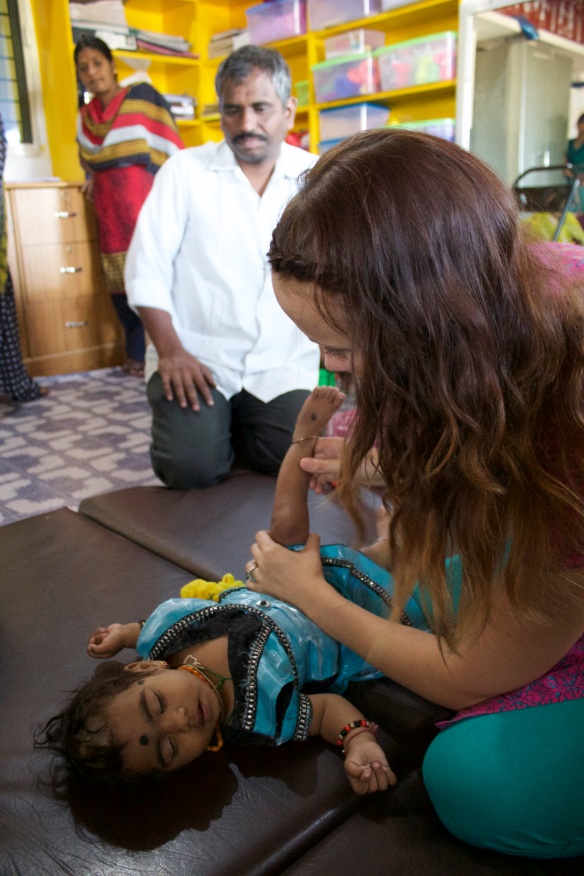 Prabhakar’s dream is to have multiple clinic spaces (currently only one treatment room) staffed by three assistants, and to hire a recruiter to visit villages, meet with doctors and other health care professionals, and provide simple education sessions to surrounding community members.
Prabhakar’s dream is to have multiple clinic spaces (currently only one treatment room) staffed by three assistants, and to hire a recruiter to visit villages, meet with doctors and other health care professionals, and provide simple education sessions to surrounding community members.
The Early Intervention Center in Deodurg needs quite a bit of help – it seems like operations are all over the map. Volunteers in December will be dedicating most of their time to analyzing the processes and suggesting some time-saving strategies to also appropriately increase the reach of the services in the area.
In Raichur, we are hoping to launch an Early Intervention Center!! Raichur is a town of 200,000 people and there are NO services for young children with disabilities. Currently there is a workshop there that is struggling for business. We’re trying to estimate the cost of this start-up which can then contribute to the workshop orders, and luckily we have two existing successful Early Intervention Centers to base our plans on.
Senior Workshop Technicians Basuraj (L), Ashok (R), and CBR-Worker Babumiya (middle) dream to have busy, smoothly running EICs in Raichur and Deodurg and an efficient workshop set up to allow them to serve more villages in these areas. They also wish for a mobile workshop (via a kitted-out van or autorickshaw?!) to bring services to those who can’t come to them. Imagine that!
Here are a couple of photos of the current workshop – we’re hoping to move the main manufacturing center to Deodurg, have only a satellite clinic in Raichur, and use the existing bright and colourful space for therapy for little kiddos!
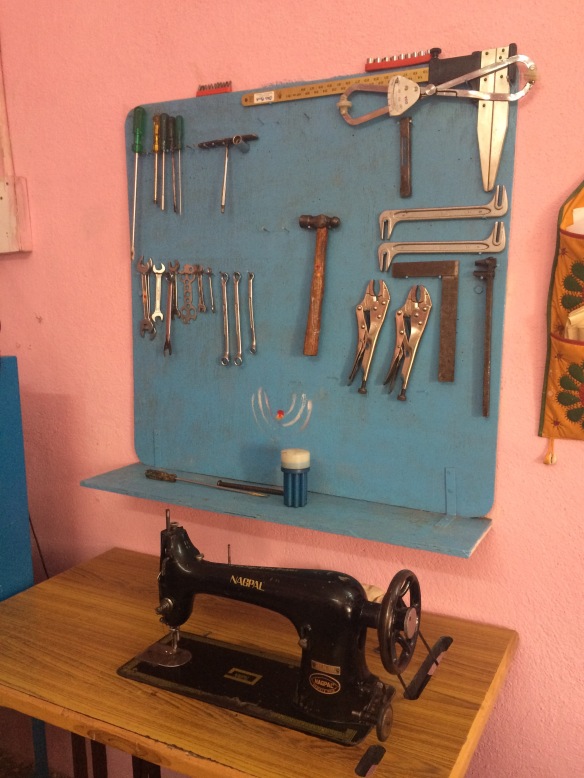
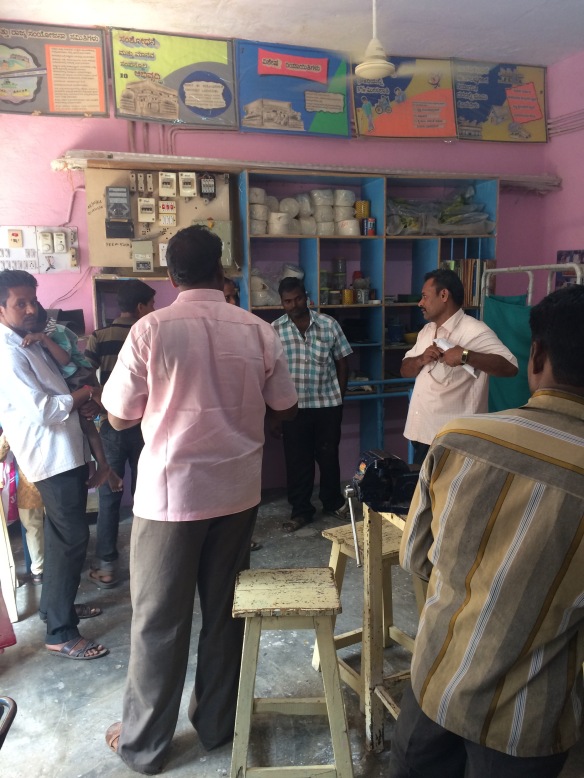 The Spinal Cord Rehabilitation Center currently needs the most attention. There aren’t any fully-trained therapists working there and it’s currently running a major deficit due to low attendance. The main reason for the lack of patients is that most families cannot afford the Rs.4000/month cost ($80CAD) even though the patients would really benefit from the service. Also, a lack of an on-site medical professional make it even less attractive.
The Spinal Cord Rehabilitation Center currently needs the most attention. There aren’t any fully-trained therapists working there and it’s currently running a major deficit due to low attendance. The main reason for the lack of patients is that most families cannot afford the Rs.4000/month cost ($80CAD) even though the patients would really benefit from the service. Also, a lack of an on-site medical professional make it even less attractive.
Physio volunteer Jen Tam has travelled along very bumpy village roads to do home visits for patients with spinal cord injuries and has been observing the current “short-stay camp” – a week-long camp for 7 old and new patients (see photos below) to get together and review exercises and gain support from their peers. Jen has come up with several great ideas:
- hiring a part-time nurse to care and educate staff and patients on wounds
- having a day of ‘stations’, where patients get to try various vocational and leisure activities (instead of just talking about the possibilities). Some ideas include caring for chickens to produce eggs for income, learning how to garden while being in a wheelchair, and learning to play wheelchair basketball
- holding short-stay camps several times per year versus trying to recruit patients for 3-month long stints
We’re choosing two staff members to send for a 10-month distance education training program through the Association for People with Disabilities (APD) based in Bangalore to really increase the quality of care that we provide for these vulnerable clients.
One more round of thank-yous to Julie Alexander, who’s creativity and problem-solving skills contributed highly to this project!
Next up – what factors do we need to consider when making human resource decisions in a rural Indian organization?? Hint: it’s verrrryyyy different than hiring and firing in Canada!

